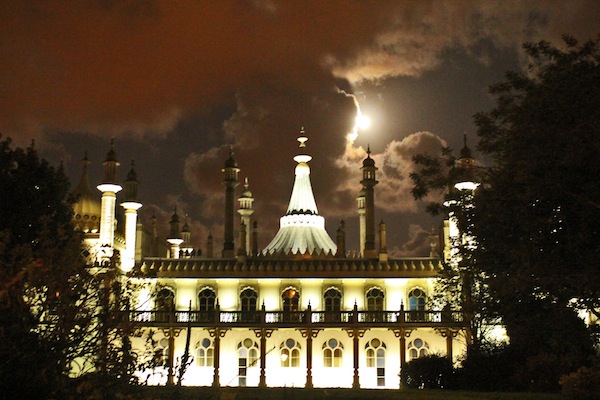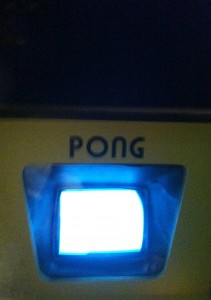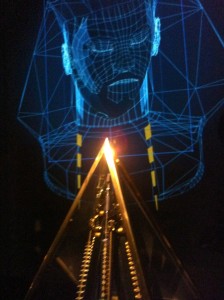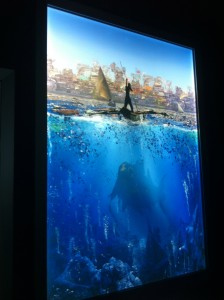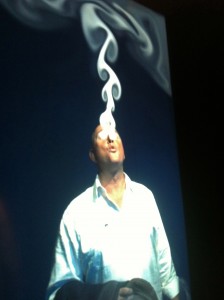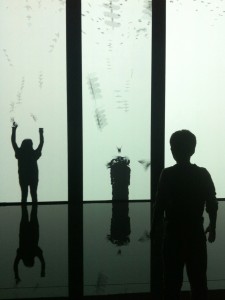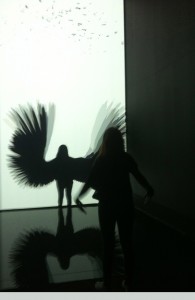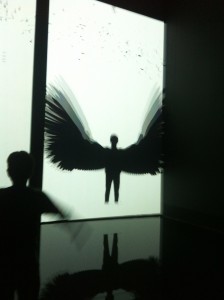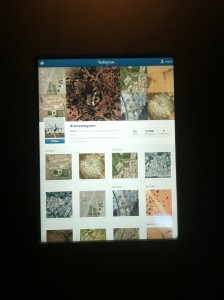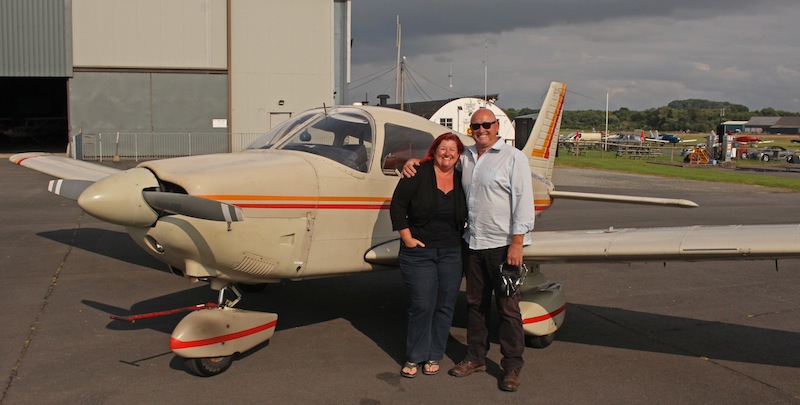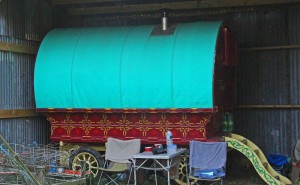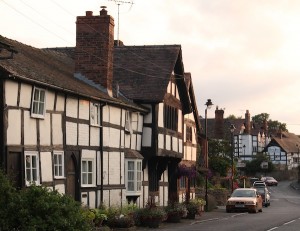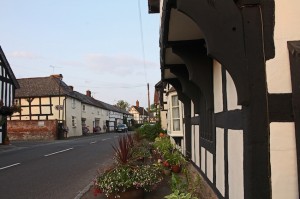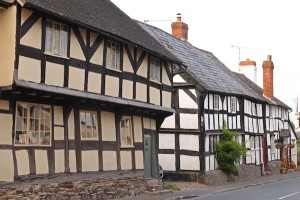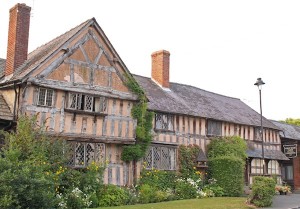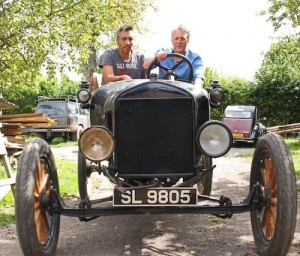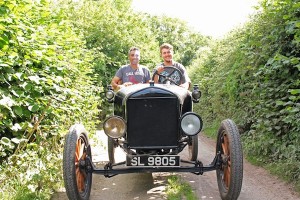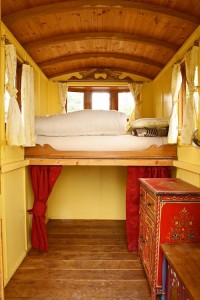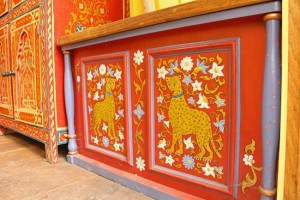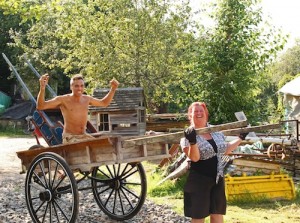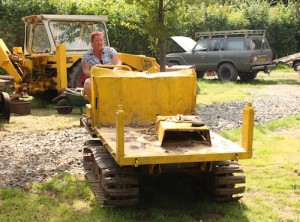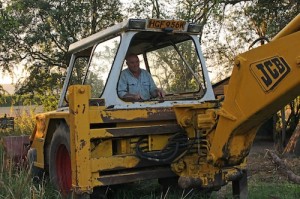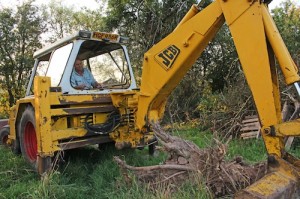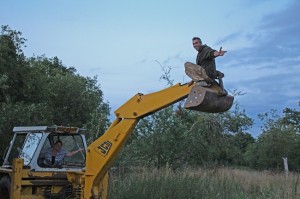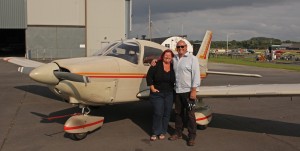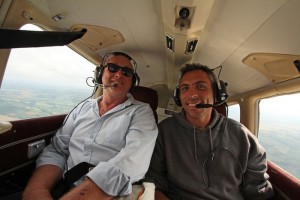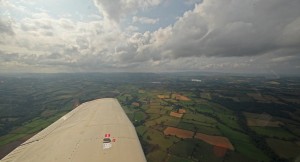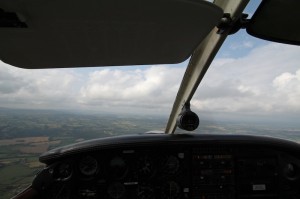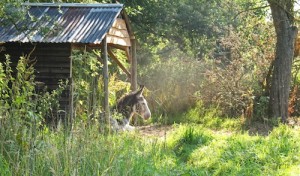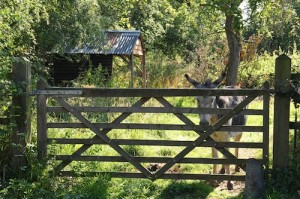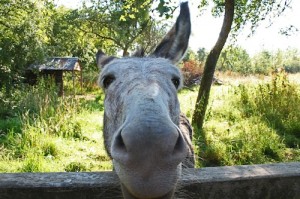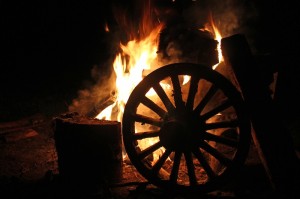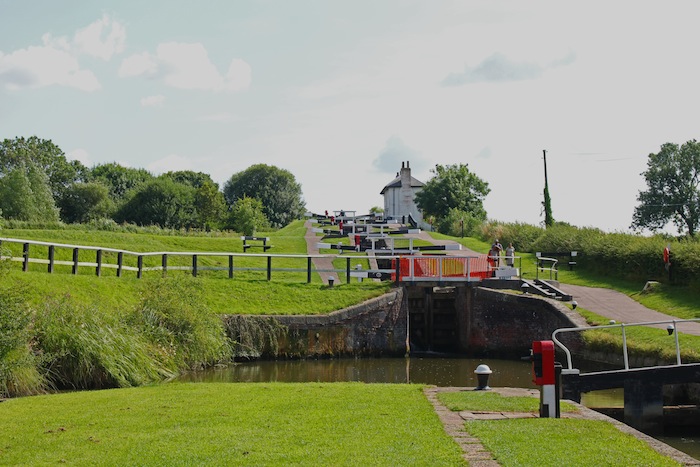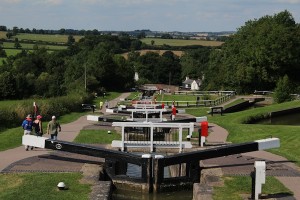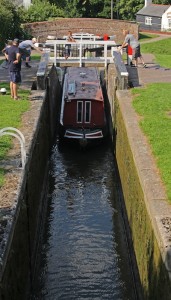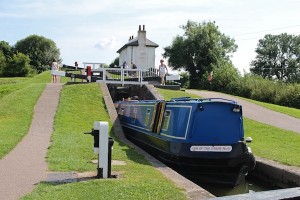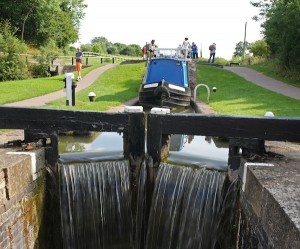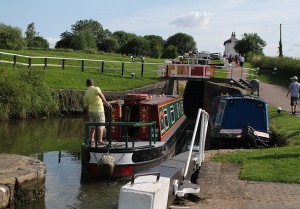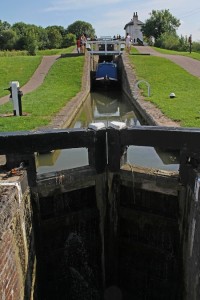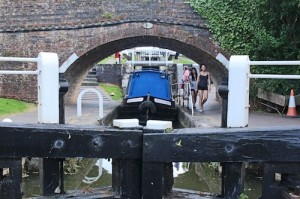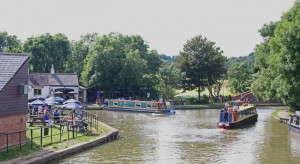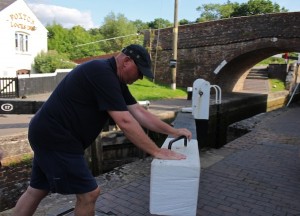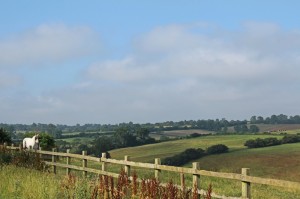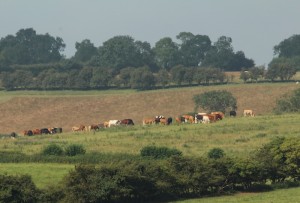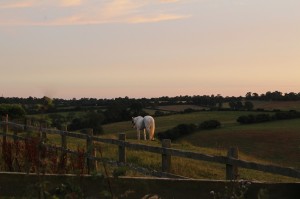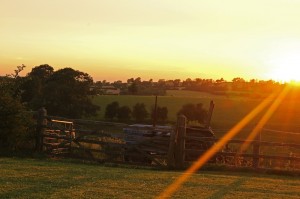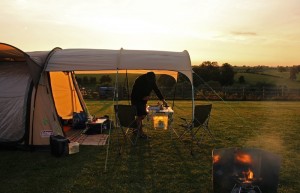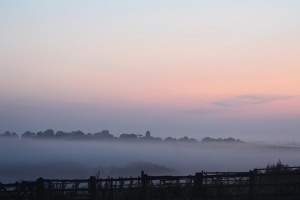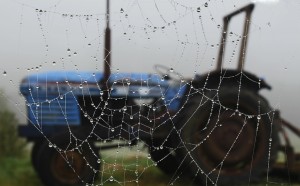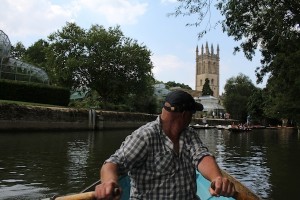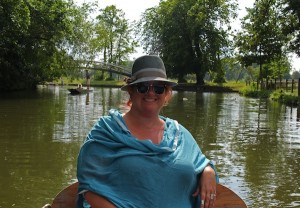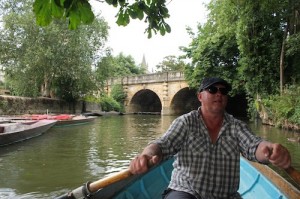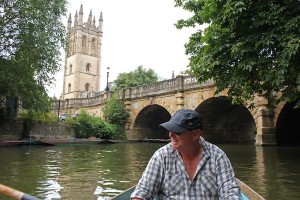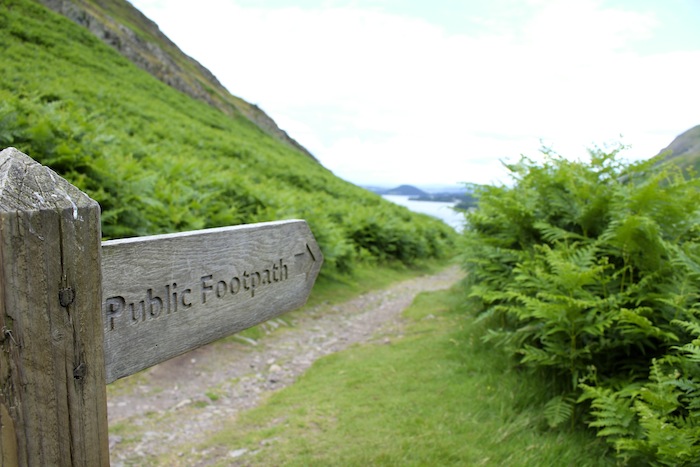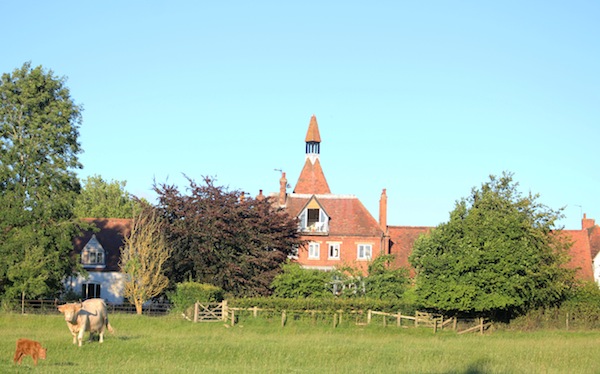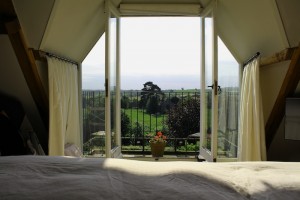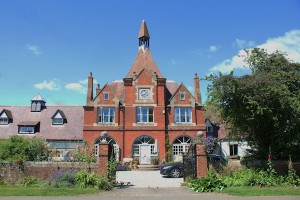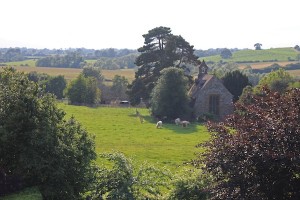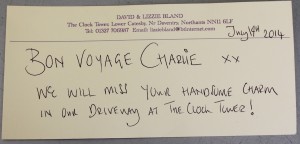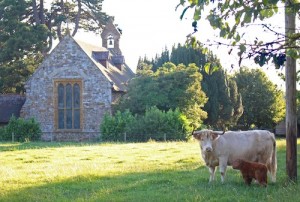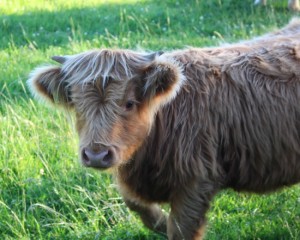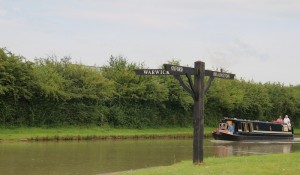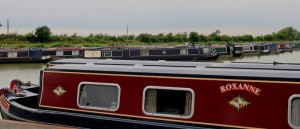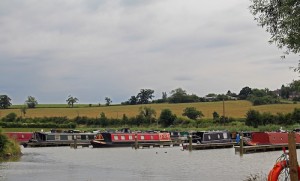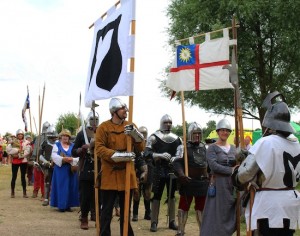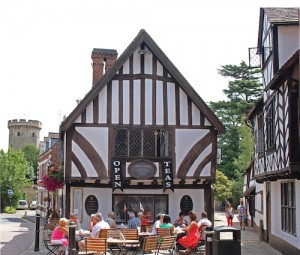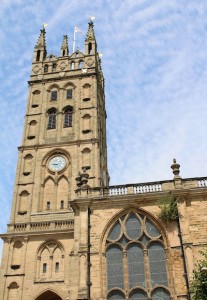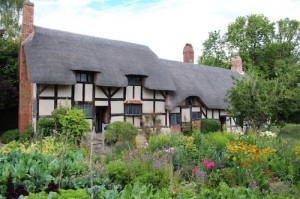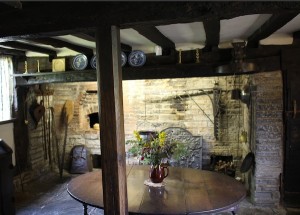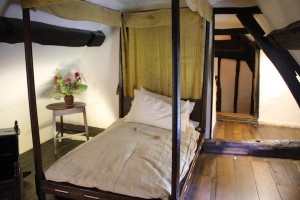Here’s a bumper blog of goodies and lovely pictures of the English summer since we arrived a few weeks ago, so grab a nice cup of tea and a digestive and settle in to country life.
We sailed from Amsterdam to Newcastle in the north of England – If you know England then you will know how unlikely this sounds – our first days we wild camped in the woods, just seven miles from Newcastle!
Ike runs a farm at Blaydon Burn, just outside the city and has opened up his woodlands to a small number of lucky campers like us.
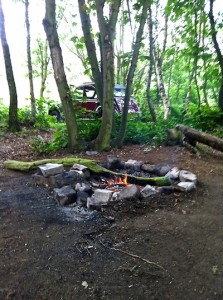
Wild camping in the woods
While I practiced with my lovely coconut shell-handled fire-steel – my latest gift from Geoff – he was off lugging logs for us to burn at the Burn.
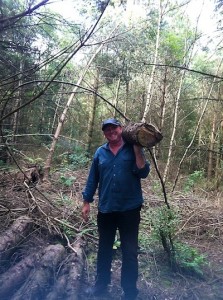
Geoff hauling logs
The woods were a great start for our English adventure and a real find so close to such an industrial centre.It was also close to one of the most well known and well-loved industrial sculptures in the North of England – the 20m high, 54m wide Angel of the North.
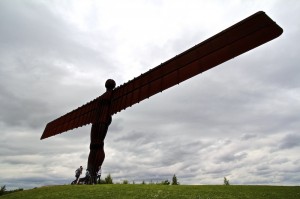
The Angel of the North
After a couple of days we headed to the Lake District, via the original Penrith, whose name has been adopted by Australia (along with dozens of others – including the city made famous as the birthplace of the Beatles and Geoff Nimmo – Liverpool).
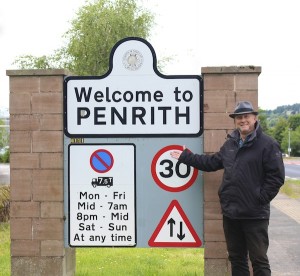
The other Penrith
After being told that everywhere was booked out because of a cycle race, we were pretty pleased to final get a pitch on an albeit rather busy campsite overlooking Ullswater lake.
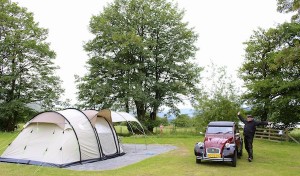
Happy to be at the Lake!
The crowded site was explained a few hours later, when the tannoy rudely awoke us at 07:30 on Sunday morning, instructing the competitors in the triathlon to take their places in the Lake. Just watching them made us tired, but the views of the Lake made up for the early start.
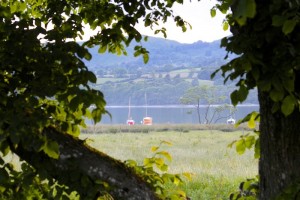
Colourful boats on Ullswater
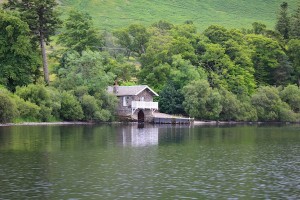
Even the boathouses are pretty here
After all that activity, a gentle sail on the lake in a traditional Ullswater steamer was in order.
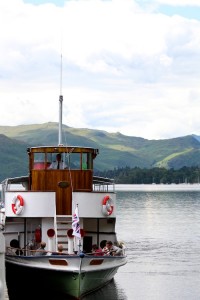
One of the historic Ullswater Steamers
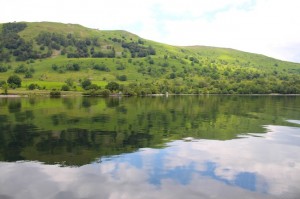
Mirroring the sky and land
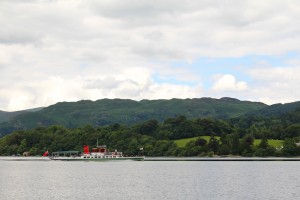
The elegant lines of one of the Ullswater Steamers
An overflight by a WWII Spitfire made a change from the roar of air force jets, which use the lakes for low-flying practice, despite it being a National Park.
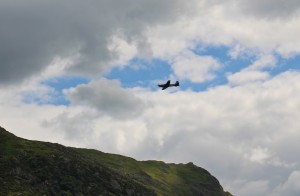
A Spitfire made a change from the low-flying RAF jets
Over the next few days, we travelled along, around and over many of the lakes and fells – the name for hills in the Lake District.

Charlie is dwarfed by the fells in the Lake District

Old stone bridge
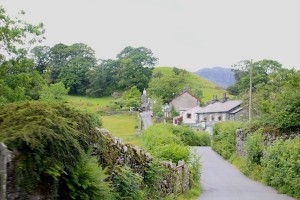
More Lake District chocolate-box views
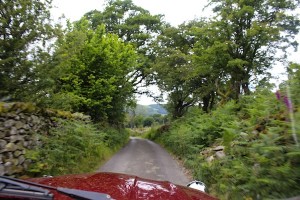
The narrow roads around the Lake District
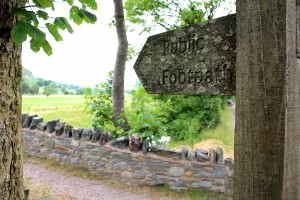
The Lakes are criss-crossed with footpaths
We discovered the Standing Stones of Castlerigg and figured out pretty quickly why they aren’t as famous as Stonehenge – because most of them only come up to your knees.
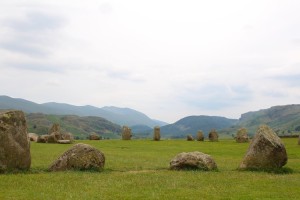
The Standing (not very tall) Stones of Castlerigg
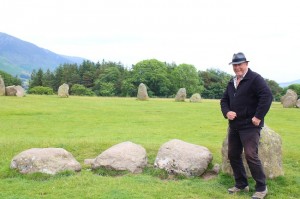
Spinal Tap moment
We came nose to nose with the creatures that are now almost as famous as the Lakes, thanks to a certain Miss Potter,
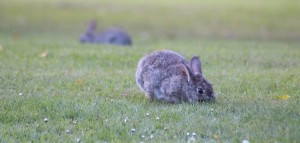
Beatrix bunnies abound at the campsite
and we strolled the very valleys that inspired poets and writers across the ages,
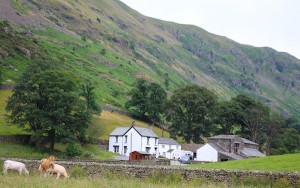
A classic Lake District view
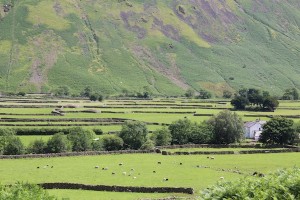
and supped tea in some of the delightful villages. This house in Ambleside was originally built over a river to keep the apple harvest cool. It also became home to a family of ten in the last century, despite being narrower than Geoff’s arm span and only two rooms!
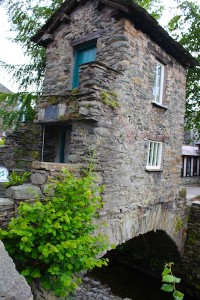
The tiny Bridge House – home to a family of ten in Ambleside
North of the Lakes is Hadrian’s Wall – which was begun in 122AD and runs from coast to coast.
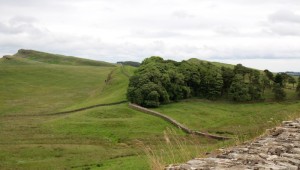
Hadrian’s Wall stretching into the distance
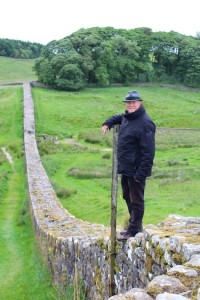
Standing on Hadrian’s Wall
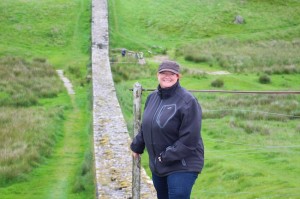
Standing on Hadrian’s Wall
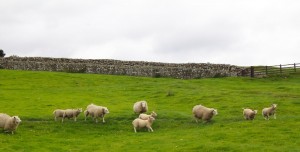
The invading baaa-barians at Hadrian’s Wall
The Wall was not built as many think, to keep the Scots out, but more likely to raise taxes from anyone, Scots or otherwise, who wanted to travel south.The Roman fort at Housestead is one of the most intact along the 73miles/117km length of the Wall and a fascinating insight into the tough life of a frontier soldier.
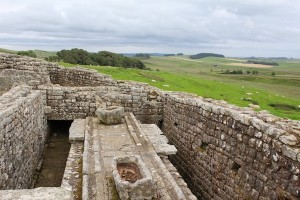
A good view from the toilet at Hadrian’s Wall
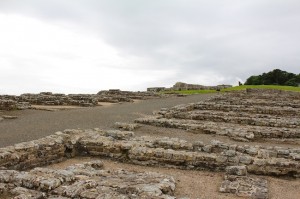
The soldiers barracks at Hadrian’s Wall
We got a small taster as we became fog-bound heading back to the Lakes heading over Honiton Pass in the Northern Pennines.
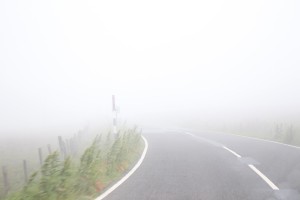
The fog comes comes down over the Pennines
Honiton Pass may have been foggy, but at least it didn’t have a 1:4 gradient. Wrynose Pass in the Lakes does!
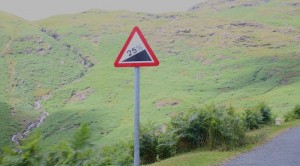
The Wrynose Pass – was quite a challenge
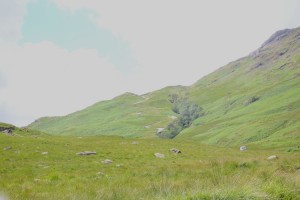
The Wrynose Pass snaking up over the hill
Charlie chugged us over it and Hardknott Pass – which claims a 1:3 gradient and therefore the steepest road in England.
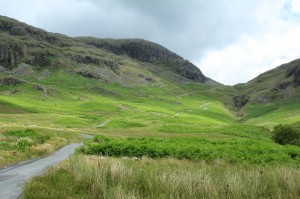
Looking back up Hardknott Pass
If the Roman’s billeted at Hadrian’s Wall had it tough – spare a thought for the ones that had to march up to the Hardknott Fort through a bleak northern winter.
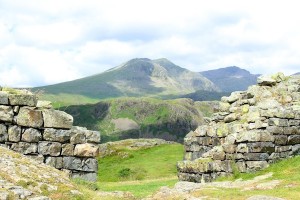
Hardknott Roman fort, looking across to Scafell Pike
While Hardknott is the steepest road, Wasdale Head claims a clutch of “ests” – Wast Water is the deepest lake in England, Scafell Pike the highest peak, St.Olaf’s Church the smallest in the country and the Wasdale Inn hosts the world’s biggest liar contest – in honour of a former landlord who claimed the title for himself.
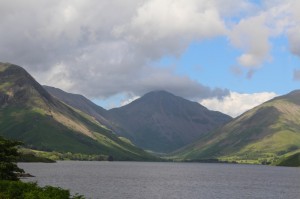
Wast Water – the deepest lake in the district
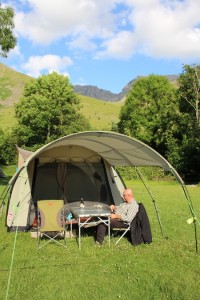
Camping in the shadow of Scafell Pike
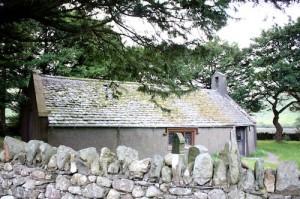
St Olaf’s church – the smallest church in England
We left the smallest car in the Lake District at our campsite and went walking in the hills and dales.
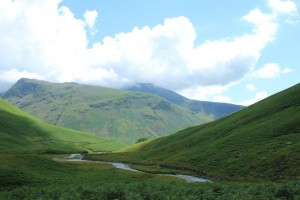
The valley through which we hiked
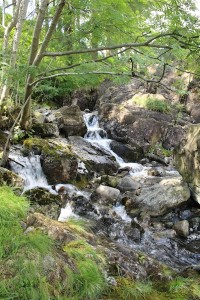
Ritson’s Force – a waterfall named after the biggest liar
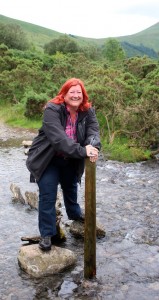
Fording the roaring river of the Lake District!
Later we headed off to nearby Nether Wasdale and possibly the sillest contest – the annual village beer race. Down a pint, run round the maypole to the next pub. Down a pint, run up the hill to the next pub. Down a pint, run down the hill to the finish line.
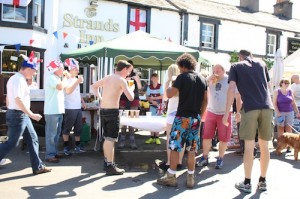
The well-rehearsed Beer Race
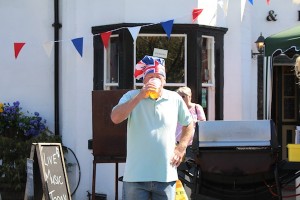
That will hurt later!
Victory looked far from sweet!
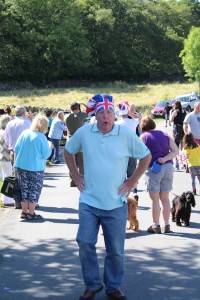
That was tough!
We left the Lakes to score the last of the “ests” – staying in the highest Inn in England – the Tan Hill Inn on the Pennine Way.
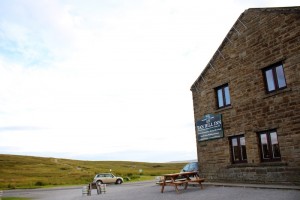
The Tan Hill Inn – highest pub in England
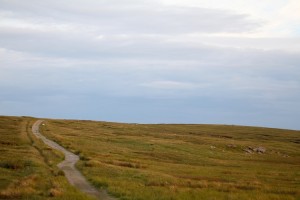
The Pennine Way from the window of the Tan Hill Inn
The Lakes and North were lovely and although, to misquote Wordsworth, the clouds were far from lonely a lot of the time and we got the bests of British weather, we still gloried in the beauty of the place. There are more photos in the slide show in addition to those in the story, so make a nice cup of tea and enjoy the sights with us.

